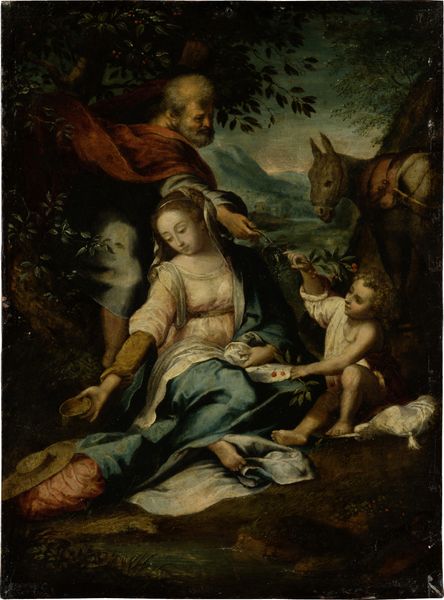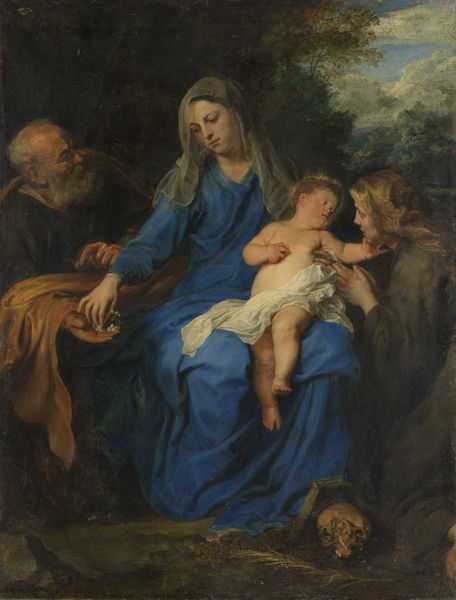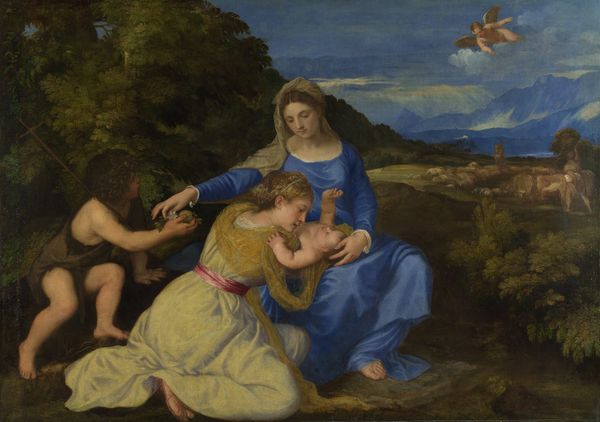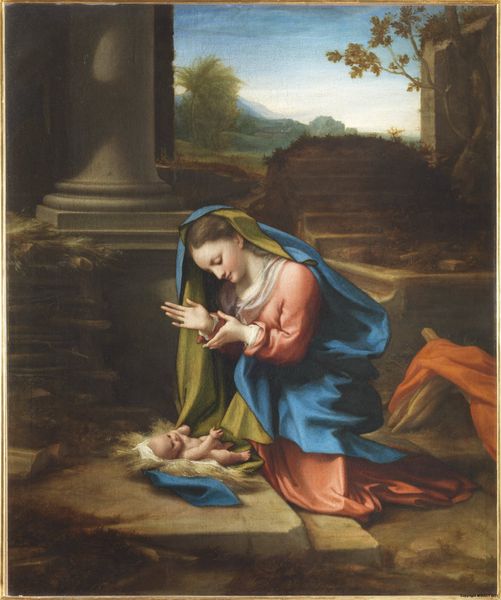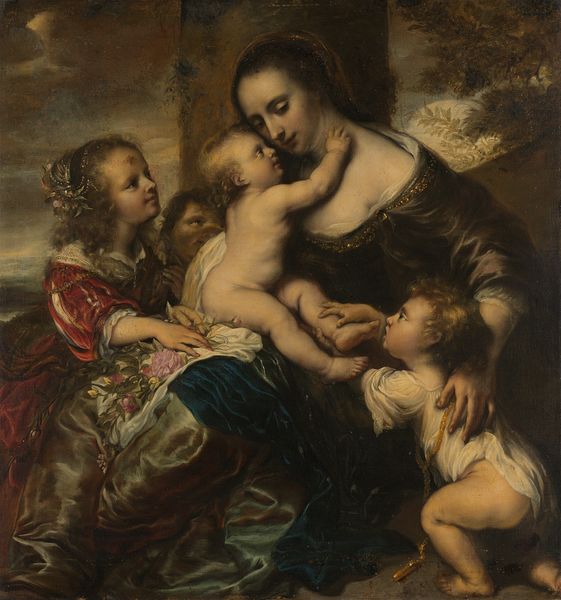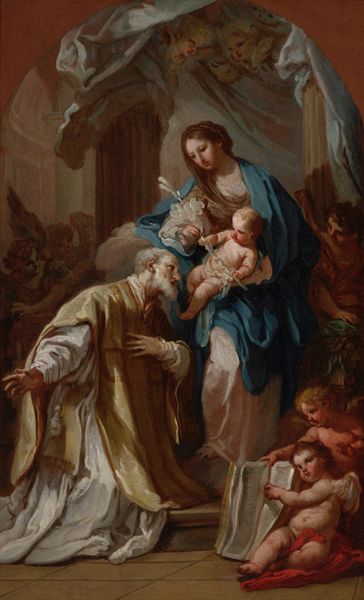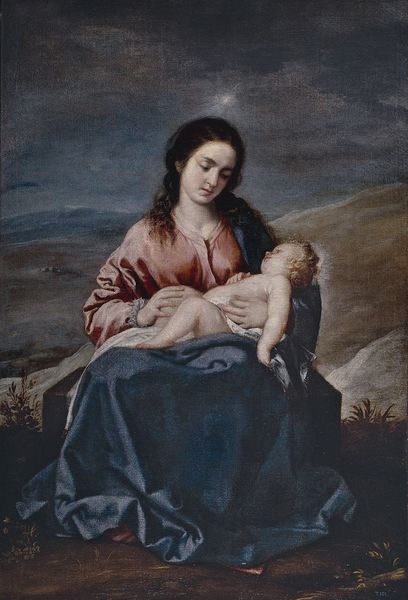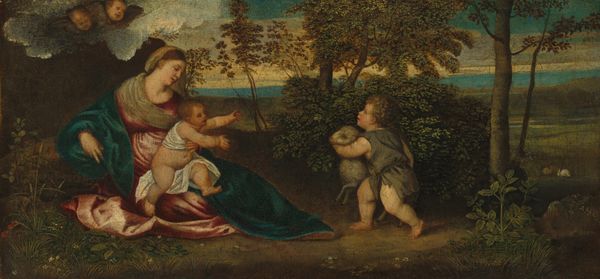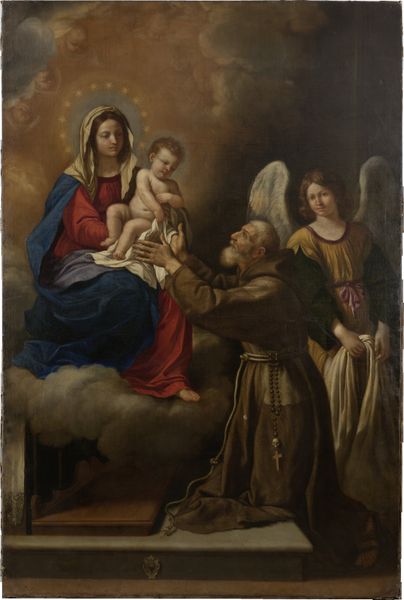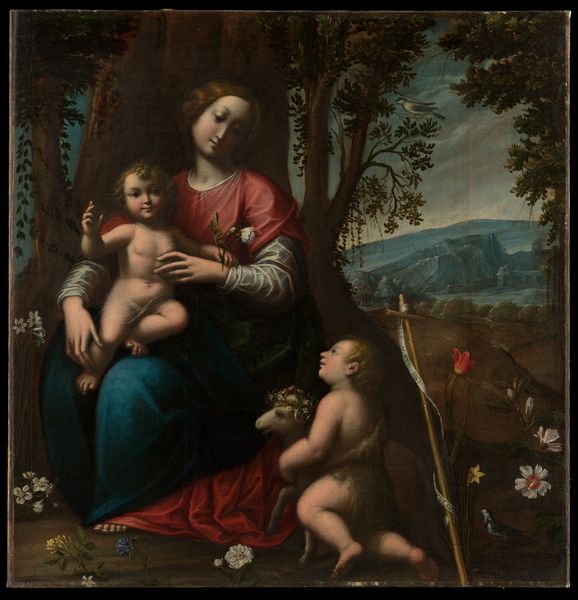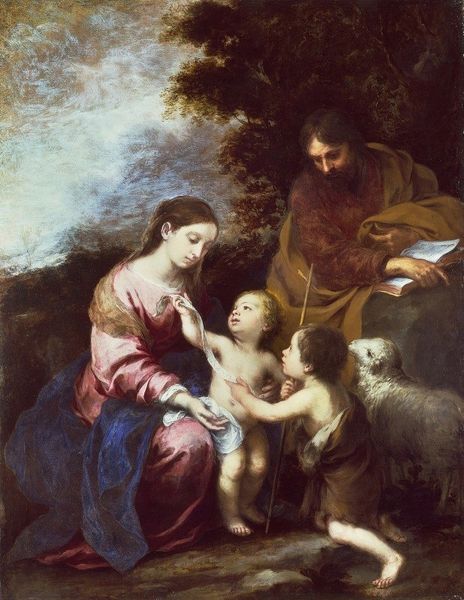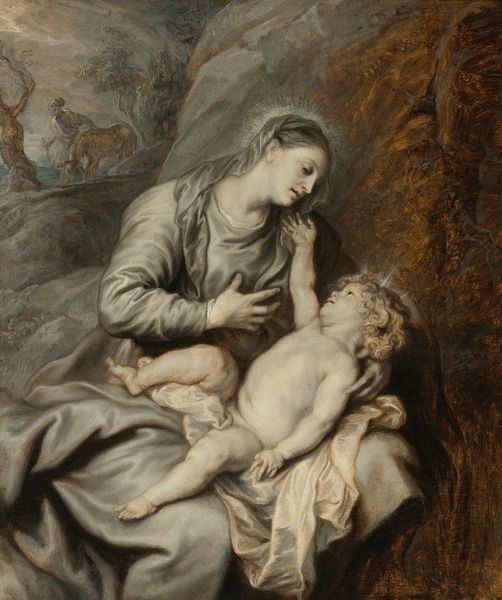
painting, oil-paint
#
portrait
#
painting
#
oil-paint
#
mannerism
#
figuration
#
chiaroscuro
#
history-painting
Dimensions: height 103 cm, width 102 cm
Copyright: Rijks Museum: Open Domain
Editor: We’re looking at Ludovico Carracci’s “The Vision of Saint Francis of Assisi,” painted between 1583 and 1585 using oil on canvas. It’s quite a dramatic scene with strong contrasts of light and shadow. How do you interpret this work, especially given its historical context? Curator: Well, this piece immediately brings to mind the complex interplay between religious iconography and the socio-political climate of the late 16th century. The Counter-Reformation was in full swing, and art became a powerful tool for the Catholic Church. Consider how Carracci uses the figure of Saint Francis, a symbol of poverty and piety, cradling the Christ child, while the Virgin Mary stands serenely beside him. What might this tableau communicate to the contemporary viewer? Editor: Perhaps a message of comfort and divine approval, reinforcing traditional religious values. The darkness surrounding the figures also adds a sense of mystery. Curator: Exactly. Now, let's think about who would have been consuming this image. What social classes? How might their understanding of faith intersect with the politics of the time? Carracci situates his figures in this ambiguous, darkened landscape which arguably, is in dialogue with growing uncertainty and social unrest. The stark contrast creates an intimate encounter, almost like a private vision. Does that reading resonate with you? Editor: It does. It makes me consider how art was intentionally designed to evoke emotional responses, drawing people closer to the church amidst social tensions. I had only thought about art with this in mind more recently but I see its historical roots here. Curator: Indeed! Seeing this as a historical intersection gives us much more understanding of the artwork as more than just pretty. Editor: It really does reframe everything. Thanks so much!
Comments
rijksmuseum about 2 years ago
⋮
Ludovico Carracci was one of the earliest painters to explore the emotional side of religious revelation. Here he illustrated, for the first time in art, an episode in which one of Saint Francis’s followers witnessed an apparition of the Virgin giving the Christ Child to the saint to hold. Carracci distinguished the heavenly light around the Virgin from the nocturnal moonlit landscape (on the left at the painting), at the same time he emphasized the intensely spiritual nature of Francis’s experience.
Join the conversation
Join millions of artists and users on Artera today and experience the ultimate creative platform.
